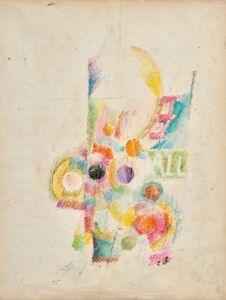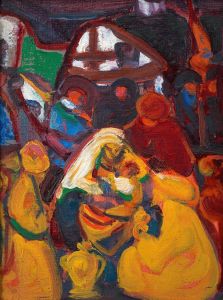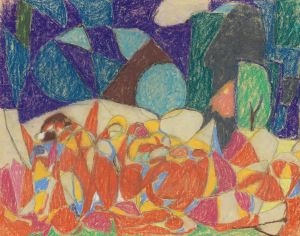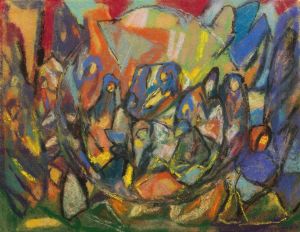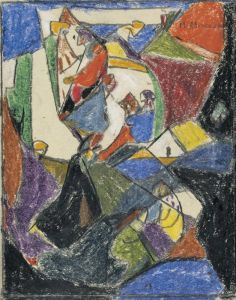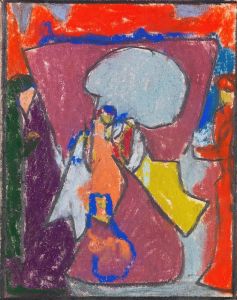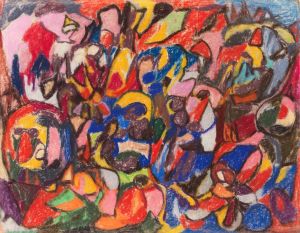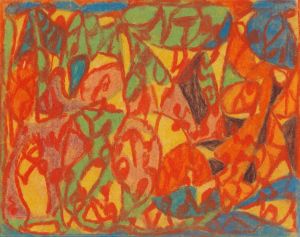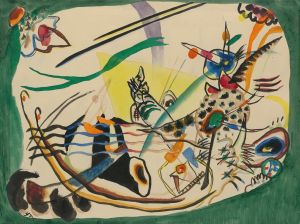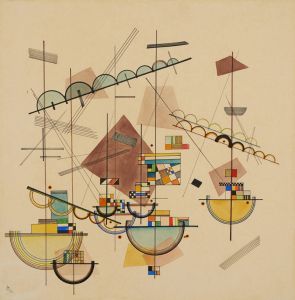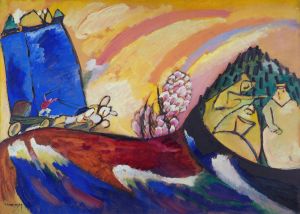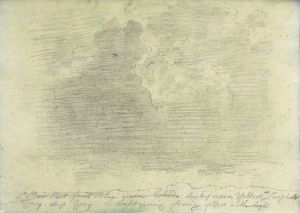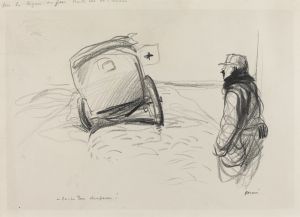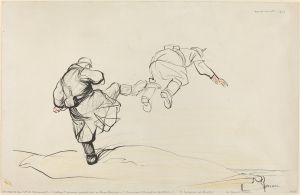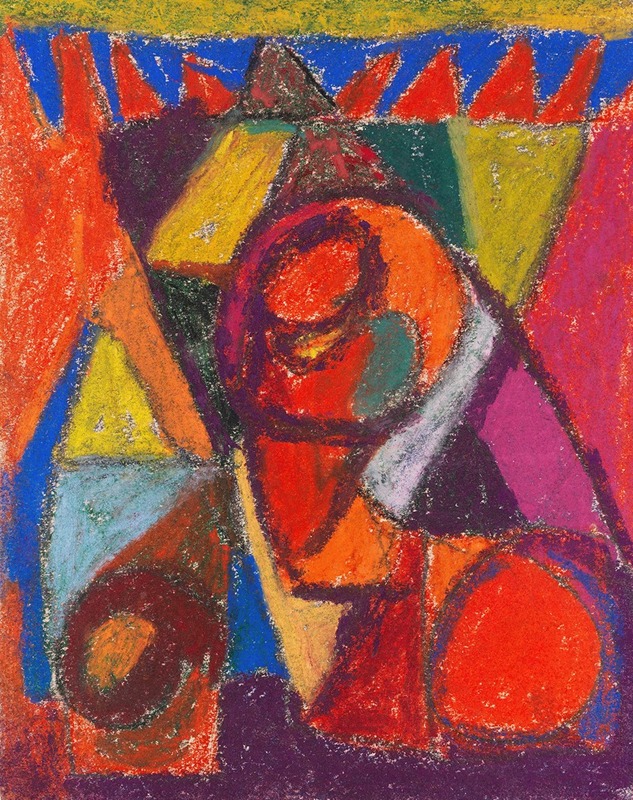
Ohne Titel
A hand-painted replica of Adolf Hölzel’s masterpiece Ohne Titel, meticulously crafted by professional artists to capture the true essence of the original. Each piece is created with museum-quality canvas and rare mineral pigments, carefully painted by experienced artists with delicate brushstrokes and rich, layered colors to perfectly recreate the texture of the original artwork. Unlike machine-printed reproductions, this hand-painted version brings the painting to life, infused with the artist’s emotions and skill in every stroke. Whether for personal collection or home decoration, it instantly elevates the artistic atmosphere of any space.
Adolf Hölzel was a significant figure in the development of modern art, known for his contributions to abstract art and his influence on future generations of artists. "Ohne Titel" (Untitled) is one of his works that exemplifies his innovative approach to art and his exploration of color and form.
Adolf Hölzel was born on May 13, 1853, in Olomouc, which is now part of the Czech Republic. He studied at the Academy of Fine Arts in Vienna and later at the Academy of Fine Arts in Munich. Hölzel's early work was rooted in Impressionism, but he gradually moved towards abstraction, becoming a pioneer in this field. He was a key figure in the Stuttgart School, where he taught and influenced many artists, including Oskar Schlemmer and Johannes Itten, who would later become prominent figures at the Bauhaus.
"Ohne Titel" is a reflection of Hölzel's mature style, which is characterized by a focus on the spiritual and expressive potential of color and form. Although specific details about this particular work are scarce, it is representative of his broader artistic philosophy. Hölzel believed that art should transcend mere representation and instead convey deeper spiritual truths. This belief led him to experiment with abstraction, using color and form as means of expression rather than tools for depicting reality.
Hölzel's approach to art was heavily influenced by his interest in music and the idea of synesthesia, where different senses are interconnected. He often compared the use of color in painting to the use of notes in music, suggesting that both could evoke emotions and create harmony. This analogy is evident in "Ohne Titel," where the interplay of colors and shapes creates a dynamic composition that invites viewers to experience the work on an emotional level.
Throughout his career, Hölzel was involved in various artistic movements and groups, including the Munich Secession and the Berlin Secession. He was also a member of the Deutscher Künstlerbund, an association of German artists. His teaching at the Stuttgart Academy was particularly influential, as he encouraged students to explore new artistic ideas and techniques, laying the groundwork for future developments in modern art.
Adolf Hölzel passed away on October 17, 1934, in Stuttgart, Germany. His legacy lives on through his contributions to abstract art and his impact on the artists he mentored. "Ohne Titel" remains a testament to his innovative spirit and his belief in the transformative power of art. While specific details about this work may be limited, its significance lies in its representation of Hölzel's artistic vision and his role in the evolution of modern art.





